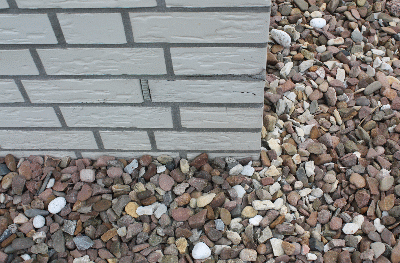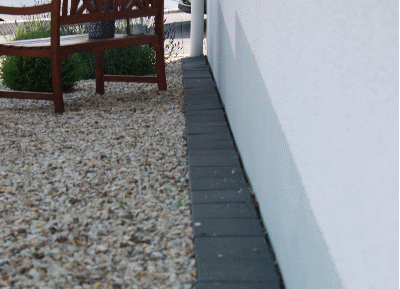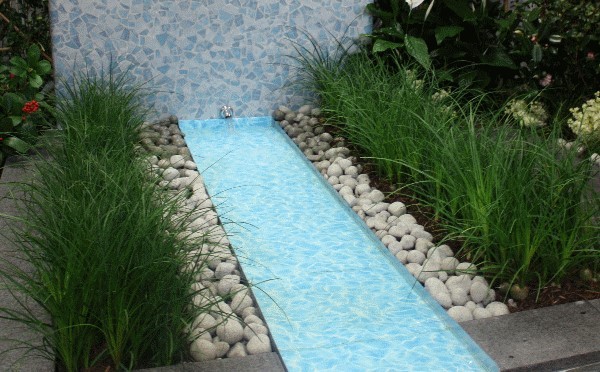Calculate gravel costs - Calculate Now
What is a gravel garden?
A well-known pioneer and "inventor" of the gravel garden is the well-known English garden designer and plant expert Beth Chatto. In her early days, she was then faced with the problem of trying to convert a large, fallow area of dry and compacted soil into a garden. But how to combat wild growth and lack of water without standing in the beds nearly every day? The solution was a "gravel garden."
This is not just a collection of stone material, but it also houses a variety of select perennials, woody plants and grasses that require very little maintenance and are very drought tolerant. A gravel garden involves selecting specific areas of the garden, covering them with gravel or chippings that are not too coarse, and then planting them. This style of design takes some preparation, but it pays off. Especially when it comes to the effort and cost of irrigation. In fact, this is eliminated altogether, except for watering after planting. A well-designed gravel garden is also very attractive because it has something to offer in every season.

Gravel garden calculator: calculate amount of gravel for gravel garden
In any case, if not much time can be spent on maintenance, but still want the garden to always look attractive. In this case, an ornamental gravel garden is especially suitable for gardens or garden areas that tend to be dry and exposed to sun and heat most of the day. Gravel has the advantage here of covering the ground, reflecting the sun's rays due to its light color, and thus lowering evaporation. Front gardens, the visiting card of the house, are especially popular to be laid out according to this model.
Choice of materials and cost of gravel garden
For the work will need gravel of various sizes, as well as quartz sand. Suitable sizes of gravel:
- for loosening the soil approx. 2/8 mm grain size, costs approx. 13.00 € / tonne
- to cover the bed approx. 8/16 mm grain size, costs approx. 13,00 € / tonne
- Quartz sand 0/2 for loosening the soil, costs approx. 23,00 € / tonne
- Possibly stones of different sizes to fill the bed.
These can be obtained, for example, from a quarry, from your own stock in the garden or from the natural stone trade. Costs are charged per ton and depend on the type of rock.
The right choice of plants for a gravel garden
Here you can draw from the full range of suitable perennials and grasses that cope well with dry and hot locations. Decisive for the choice of plants, in addition to design considerations, is above all the size of the area in question. In a large bed, the future planting has enough space to spread out and grow together into a harmonious picture. In a small area, such as a front garden, the perennials should be chosen wisely and strongly growing and rampant plants should be avoided. It is also important to carefully study the climatic conditions of the surrounding area.
When choosing plants, it is advisable to limit oneself to a few species that flower for a long time and arrange them in loose color bands. Many of these perennials still look beautiful in winter when frost has moved over them. Grasses have a lively effect in the planting and bring additional shades of green, and in the fall, shades of yellow or gold to the garden. Bulbous plants bring special accents to the design at certain times of the year, for example in spring. So if you are well informed about the characteristics of your favorites from the outset, you will not be disappointed and can later enjoy a successful and beautiful design.
Plant list as a recommendation
The following plant list as a recommendation for a gravel bed provides a good overview of the different genera of suitable perennials and grasses for the gravel garden. Since there are a great many plants to choose from, the following are intended to be recommendations only. The plants are all included in the common assortment of good nurseries or garden centers and can be purchased there.
Perennial large shrubs for dry places (approx. 6-8 m height)
- Rock pear (Amelanchier lamarckii)
- Rocket juniper (Juniperus scopulorum 'Skyrocket')
- Bladder tree (Koelreuteria paniculata)
Perennial shrubs (from 1 m height)
- Cherry laurel (Prunus laurocerasus 'Zabeliana')
- Butterfly bush, in varieties (Buddleia davidii) Shrub roses, in varieties
Semi-shrubs and perennials (up to 1 m high)
- Climbing spindle bush (Euonymus fortunei 'Emerald'n Gold)
- Ivory broom (Cytissus x praecox)
- True lavender (Lavandula angustifolia)
- Dwarf spirea, in varieties (Spierea japonica)
- Palm lily (Yucca filamentosa)
- Ground cover roses, in species and varieties
Grasses
- Lamp grass, in species and varieties (Pennisetum alopecuroides)
- Chinese reed, in varieties (Miscanthus sinensis)
- Pipe grass (Molinia caerulea)
- Heron feather grass (Stipa pulcherrima)
Perennials
- Yarrow, in species and varieties (Achillea)
- Echinacea, in species and varieties (Echinacea)
- Summer and autumn asters, in species and varieties (Aster)
- Thistle, in species and varieties (Eryngium)
- Stonecrop, in varieties (Sedum telephium)
- Garden sage, in species and varieties (Salvia)
- Thyme, in species and varieties (Thymus)
- Cranesbill, in species and varieties (Geranium)
Instructions on how to create your own gravel garden
 The method of preparation depends on where the gravel garden will be created.
The method of preparation depends on where the gravel garden will be created.
1) A bed that is to be created in the middle of the lawn must first be cleared of all sod and wild weeds. If couch grass or goutweed are present, these stubborn weeds should be removed very carefully, so that they can not spread further afterwards.
2) If existing beds are to be transformed into a gravel garden, it is advisable to plant out and/or dispose of all plants from these beds beforehand. Again, the beds should be very carefully cleared of all weeds.
3) Dig the soil well to the depth of a spade, add quartz sand and fine gravel depending on the heaviness of the soil, and work it in thoroughly. It is important to work the soil well before planting and to incorporate as much sand and gravel until the soil has a crumbly and permeable texture. If the soil is naturally light and sandy, no additions of gravel or silica sand are necessary.
4) Then spread the prepared soil evenly and level with a rake.
5) Now arrange the plants on the bed until the result is satisfactory.
6) Remove the plants from the pots and place them only about 2/3 into the soil. Then water the plants well with fine gravel mulch.
7) Finally, cover the bed with 5 - 7 cm of coarse gravel (8-16 mm) and add stones of various sizes to make the bed look natural.
Note: Please do not use garden fleece to cover the soil. Sprouting weeds will not be permanently suppressed by this, but will settle naturally between the gravel. In addition, fleece favors soil compaction in the long run.
Care of the gravel garden
 After a gravel garden is properly established, maintenance care is minimal. Until the planting is well grown together, wild weeds that grow in the gravel at the surface should be removed. Planting areas that are intentionally stocked with only a few accent plants should be checked every two weeks. For plantings that will eventually grow close together, one maintenance pass a month is sufficient. Most of the time, however, the weeds are crowded out by the existing perennials, so this work is virtually unnecessary.
After a gravel garden is properly established, maintenance care is minimal. Until the planting is well grown together, wild weeds that grow in the gravel at the surface should be removed. Planting areas that are intentionally stocked with only a few accent plants should be checked every two weeks. For plantings that will eventually grow close together, one maintenance pass a month is sufficient. Most of the time, however, the weeds are crowded out by the existing perennials, so this work is virtually unnecessary.
Otherwise, maintenance is limited to cutting down the perennials in late summer or fall. If the dead but decorative shoots are allowed to remain in the bed through the winter, pruning is not done until spring. Fertilizing the soil is not necessary, because these plants prefer to stand on poor soil. Therefore, this work is also not necessary. This leaves the gardener enough time to relax and enjoy.
Topics: garden & Craft & Construction



